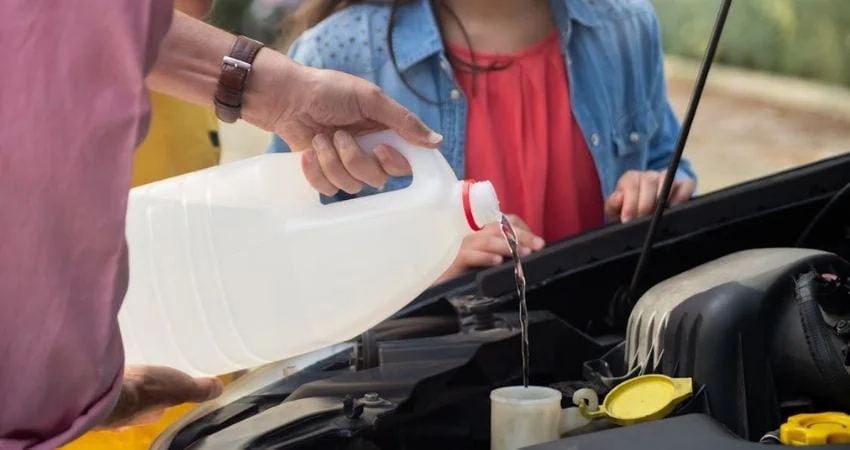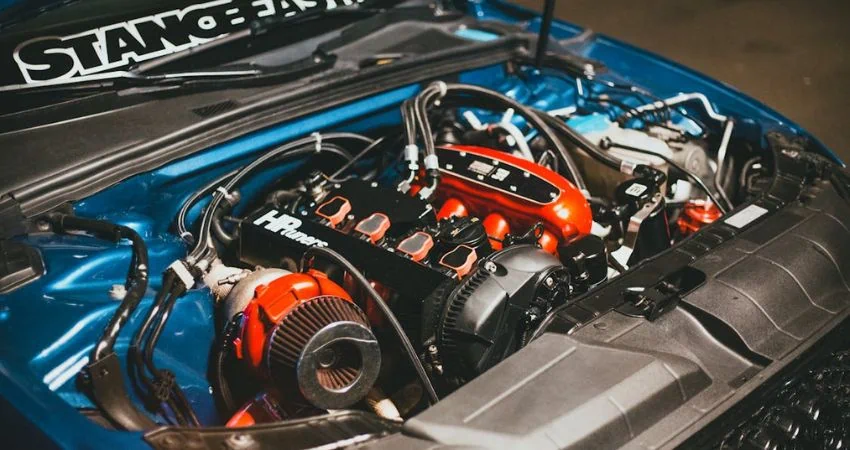If you’ve noticed red, brown, or black spots under your vehicle, it might be a transmission fluid leaking problme.
Don’t ignore it—a small leak today could turn into a big repair bill tomorrow.
Here’s how to spot it, what might be causing it, and what you can do to stop it before it gets worse.
What does transmission fluid look like?
- Fresh fluid: Bright red and slightly sweet-smelling
- Old fluid: Brown or dark, with a burnt smell
- Transmission fluid leaking: May appear red, brown, or even black on the ground
A leak doesn’t just stain your driveway. It lowers fluid levels, causes your transmission to overheat, and damages vital components. If you notice a puddle or drip, it’s time to act.
Common Signs of a Transmission Fluid Leaking
- Puddles or wet spots under your vehicle (especially near the middle)
- Low transmission fluid levels on the dipstick
- Burning smell while driving or right after parking
- Slipping gears, delayed acceleration, or hard shifting
- Transmission warning lights or a check engine light on the dash
Ignoring these signs can lead to overheating, reduced fuel economy, and complete transmission failure. The sooner you identify the cause, the more money you’ll save.
If you’re searching for why transmission fluid is leaking from your car, especially when parked or after a sudden drop in levels, here’s what’s likely happening.
Below are the most common reasons behind this issue, including specific cases like transmission fluid leaking from front of car or leaking only when parked.
- Worn Transmission Pan Gasket: The gasket that seals the transmission pan can crack or shrink due to heat, age, or poor installation. This is one of the most common leak sources.
- Loose or Damaged Drain Plug: If your vehicle has had recent service, the plug might be overtightened, under-tightened, or have a worn-out washer that fails to seal.
- Cracked Transmission Pan: Driving over road debris, curbs, or potholes can damage the transmission pan, especially if it’s made of aluminum. Even a hairline crack can cause consistent drips.
- Damaged Seals or Gaskets: Rubber seals—like the output shaft seal, input shaft seal, and pan gasket—can dry out and crack, especially in extreme cold or hot weather. Once a seal shrinks, it will leak even when the fluid level is normal.
- Leaky Transmission Cooler Lines: Cooler lines carry ATF to and from the radiator. These metal or rubber hoses can rust, corrode, or crack over time. Even a small pinhole leak can become a big problem under pressure.
- Axle Seal Leaks: If your front-wheel drive or all-wheel drive vehicle is leaking fluid near the wheels or axles, it might be from the axle seal. These leaks are often missed during routine service but can cause serious fluid loss.
- Torque Converter Seal Leak: This seal sits deep inside your transmission and is hard to see or reach. When it fails, you might see a drop in fluid level with no visible external leaks. Often misdiagnosed, but critical to repair quickly.
- Improper ATF Fill or Overflow: Too much transmission fluid can create excess pressure, forcing fluid out through seals and vents. Always fill to the correct level while the vehicle is on level ground and at the right operating temperature.
How to Fix a Transmission Leak
Fixing the leak depends on the source and severity:
- Gasket/Seal replacement: $50–$250, often a DIY job
- Cooler line repair: $100–$400, especially if rusted or cracked
- Pan or plug repair: $80–$200, depending on the vehicle
- Torque converter or internal seal: Can require dropping the transmission; $500–$1,000+
For small leaks, a mechanic may use UV dye to trace the exact source. If you’re confident with tools and have access to a jack and jack stands, you can replace gaskets or cooler lines yourself. But internal issues should always be left to professionals.
After fixing the leak, it’s critical to top off or replace the fluid with the correct type. Using the wrong fluid can lead to harsh shifting, overheating, and long-term wear.
Check your owner’s manual for the recommended ATF type. Personally, I’ve had excellent results with Amsoil Synthetic Multi-Vehicle ATF.
It holds up under extreme heat, doesn’t break down like cheaper fluids, and offers superior protection, especially when towing or in stop-and-go traffic. I’ve seen smoother shifts and less wear since switching.
How Long Can I Drive With a Transmission Leak?
It depends on the severity of the leak. A minor drip might allow short trips, but a sudden transmission fluid leak can quickly lead to overheating and internal damage.
If you’re losing fluid fast or seeing transmission fluid leaking from front of your car, it’s best to stop driving and get it checked. Running with low fluid can cause hard shifting, delayed engagement, and eventually destroy the transmission.
Transmission Leak Symptoms to Watch For
Besides visible fluid under your vehicle, here are key signs you might have a leak:
- Rough or delayed gear shifts
- High RPMs before shifting
- Transmission slipping or jerking
- Burning smell or overheating
- Low or foamy fluid on the dipstick
If you’re seeing transmission fluid leak when parked, it could point to a worn seal or pan gasket that only leaks when pressure equalizes after the engine is off.


